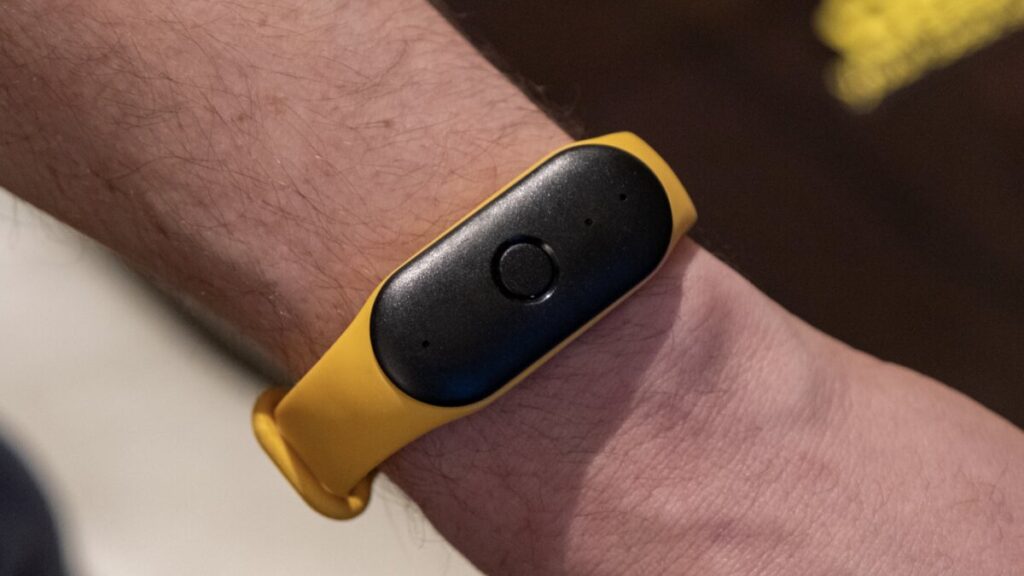In the ever-evolving landscape of wearable technology, AI-powered devices have yet to find their footing. Previous endeavors like the Rabbit R1 and Humane AI Pin made grand promises but fell short on delivery, dampening enthusiasm for AI-driven wearables. Enter Bee, a newcomer to the scene, determined to redefine the narrative with its innovative wrist-worn AI device, the Bee Pioneer.
The Bee Pioneer distinguishes itself with its foundational purpose: to act as a seamless, unobtrusive companion by listening to daily interactions and compiling a personalized knowledge base. Its capabilities include logging daily activities, generating to-do lists derived from ambient conversations, and even sifting through dialogue for specific queries—all for the modest price of $49.99. This cost-effective approach significantly undercuts its predecessors, making it accessible to a broader audience.
At CES 2025, I had the opportunity to explore the Bee Pioneer and experience its accompanying AI service, Bee AI, firsthand. I also engaged in enlightening discussions with Bee’s co-founders, Ethan Sutin and Maria de Lourdes Zollo, which offered insights into their vision for integrating AI into everyday life.
From a design standpoint, the Bee Pioneer departs from the flashy aesthetics often associated with tech gadgets. Its minimalistic wrist strap, reminiscent of a basic fitness tracker, features a single button that toggles the microphones or allows you to query the AI assistant. This button’s function is customizable, underscoring the device’s flexibility. Notably, responses from the assistant are delivered via the user’s smartphone rather than the wristband itself—a choice that aligns with users’ preferences to utilize headphones for audio feedback.
The Pioneer boasts a detachable module that permits versatility in how it’s worn. This module can be clipped onto clothing, offering alternative methods of integration beyond the wristband. While some users might appreciate the adaptability, the conventional wristband option is likely to remain popular.
Central to the Bee experience is its app, where the data collected by the wrist-worn device converges. The app effectively organizes your life, cataloging conversational transcripts and tracing your location history. Within the app’s interface, users can pose questions rooted in past conversations, with the AI assistant drawing upon this bank of knowledge to offer tailored responses. Although the app retains no audio, it archives the text of conversations, leveraging both commercial and open-source language models like ChatGPT and Gemini to enhance interaction.
An impressive feature of the app is its ability to recognize and label voices, continually evolving its understanding with each interaction. Beyond mere transcription, it intelligently crafts reminders and to-do lists based on the context of your exchanges. Its integration with services like Gmail and Google Calendar enriches its utility, letting users inquire about emails and schedules with ease.
Bee’s long-term vision extends beyond today’s functionality, aspiring for its AI assistant to autonomously execute tasks. Demonstrations at CES showcased the assistant performing actions on an emulated Android phone in the cloud—a visionary leap that, if realized, could revolutionize user interaction with technology.
Despite its ambitions, Bee acknowledges the importance of coexisting with other AI services rather than seeking to dominate. It aims to carve out a niche, offering a personalized experience that enhances users’ ability to retain and act on their conversations.
While the potential is substantial, Bee faces the perennial challenge of privacy. The notion of an emulated phone operating in the cloud raises flags, though the co-founders stress that security concerns are pivotal to their ongoing development. As they navigate the development phase, privacy remains a top priority.
As Bee pioneers a potential new chapter for AI wearables, questions of privacy and practicality linger. However, with conscious efforts to address these challenges head-on, the company could set a new standard for integrating AI into our daily lives, offering a novel blend of functionality, accessibility, and privacy-conscious design.


